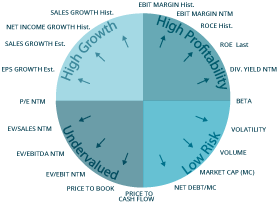Did you know ?
Beta calculation details
The calculation divides the covariance of the stock return with the market return by the variance of the market return
thus: beta = cov(ri.rm) / var(rm) where
stock return ri = (stock price at time w / stock price at time (w-1))-1
market return rm = (index at time w / index at time (w-1))-1
E(ri) = arithmetic mean of stock returns
E(rm) = arithmetic mean of market returns
covariance cov (ri,rm) = sum [ri-E(ri))*(rm-E(rm))]/count(ri-E(ri))*count(rm-E(rm))
variance var(rm) = sum[(rm-E(rm))^2]/count(rm-E(rm))^2

 Taiwan
Taiwan Factsheet
Factsheet